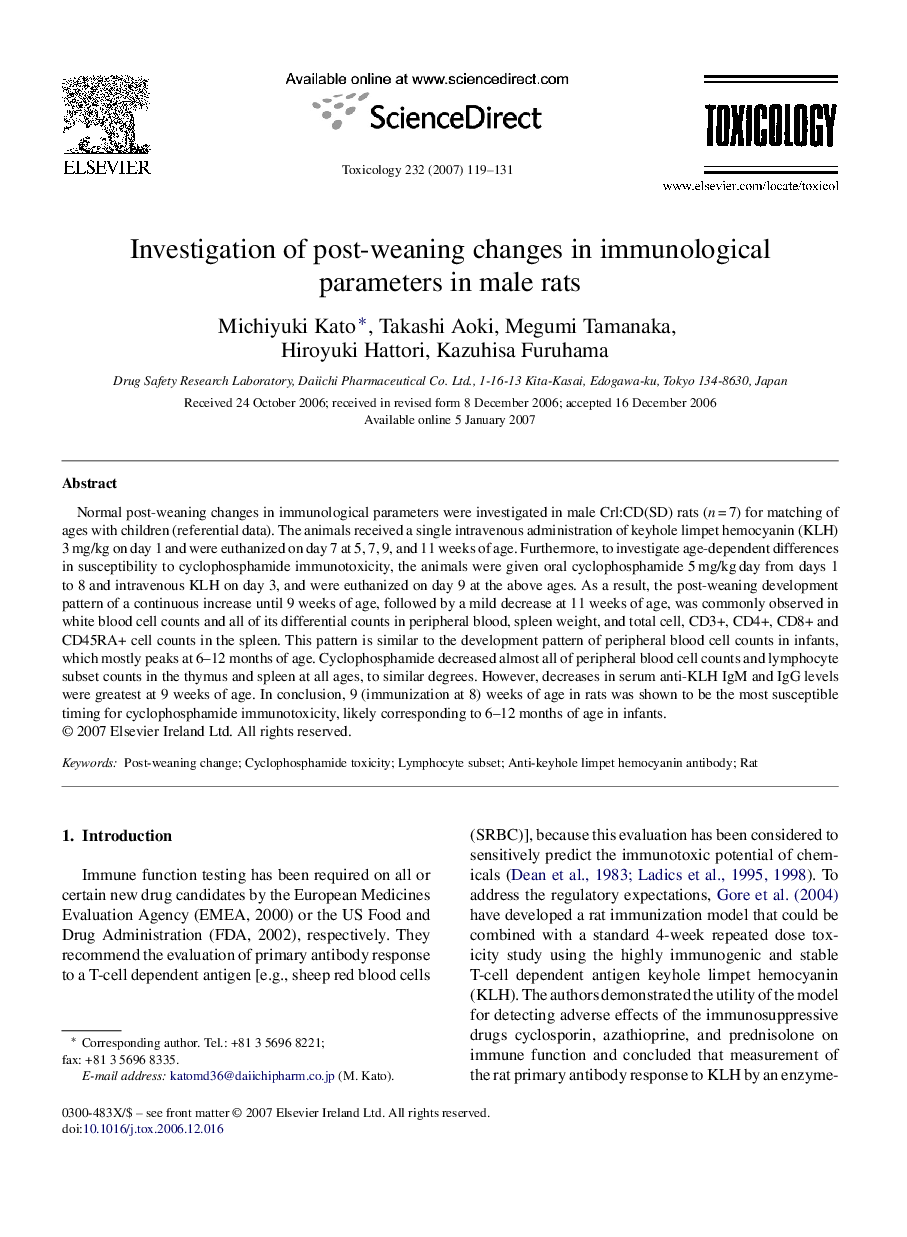| Article ID | Journal | Published Year | Pages | File Type |
|---|---|---|---|---|
| 2597837 | Toxicology | 2007 | 13 Pages |
Abstract
Normal post-weaning changes in immunological parameters were investigated in male Crl:CD(SD) rats (n = 7) for matching of ages with children (referential data). The animals received a single intravenous administration of keyhole limpet hemocyanin (KLH) 3 mg/kg on day 1 and were euthanized on day 7 at 5, 7, 9, and 11 weeks of age. Furthermore, to investigate age-dependent differences in susceptibility to cyclophosphamide immunotoxicity, the animals were given oral cyclophosphamide 5 mg/kg day from days 1 to 8 and intravenous KLH on day 3, and were euthanized on day 9 at the above ages. As a result, the post-weaning development pattern of a continuous increase until 9 weeks of age, followed by a mild decrease at 11 weeks of age, was commonly observed in white blood cell counts and all of its differential counts in peripheral blood, spleen weight, and total cell, CD3+, CD4+, CD8+ and CD45RA+ cell counts in the spleen. This pattern is similar to the development pattern of peripheral blood cell counts in infants, which mostly peaks at 6-12 months of age. Cyclophosphamide decreased almost all of peripheral blood cell counts and lymphocyte subset counts in the thymus and spleen at all ages, to similar degrees. However, decreases in serum anti-KLH IgM and IgG levels were greatest at 9 weeks of age. In conclusion, 9 (immunization at 8) weeks of age in rats was shown to be the most susceptible timing for cyclophosphamide immunotoxicity, likely corresponding to 6-12 months of age in infants.
Keywords
Related Topics
Life Sciences
Environmental Science
Health, Toxicology and Mutagenesis
Authors
Michiyuki Kato, Takashi Aoki, Megumi Tamanaka, Hiroyuki Hattori, Kazuhisa Furuhama,
